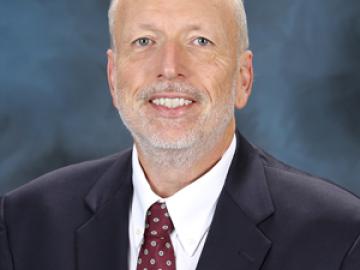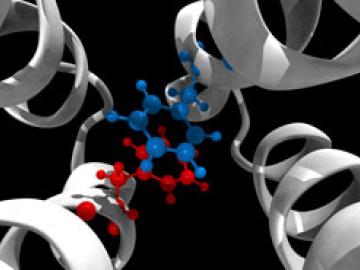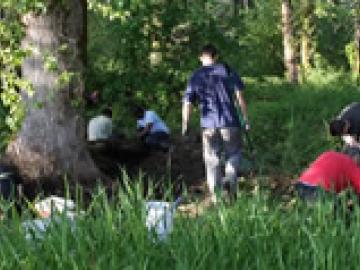Filter News
Area of Research
- (-) Computational Biology (6)
- (-) Computer Science (19)
- (-) Fossil Energy (3)
- Advanced Manufacturing (34)
- Biological Systems (18)
- Biology and Environment (177)
- Biology and Soft Matter (5)
- Building Technologies (12)
- Chemical and Engineering Materials (4)
- Chemistry and Physics at Interfaces (11)
- Clean Energy (522)
- Climate and Environmental Systems (14)
- Computational Chemistry (5)
- Computational Engineering (5)
- Data (1)
- Earth Sciences (1)
- Electricity and Smart Grid (3)
- Energy Frontier Research Centers (14)
- Energy Sciences (5)
- Fuel Cycle Science and Technology (3)
- Functional Materials for Energy (16)
- Fusion and Fission (54)
- Fusion Energy (17)
- Geographic Information Science and Technology (3)
- Isotope Development and Production (3)
- Isotopes (35)
- Materials (433)
- Materials Characterization (2)
- Materials for Computing (36)
- Materials Synthesis from Atoms to Systems (13)
- Materials Under Extremes (12)
- Mathematics (1)
- National Security (79)
- Neutron Data Analysis and Visualization (4)
- Neutron Science (190)
- Nuclear Science and Technology (74)
- Nuclear Systems Modeling, Simulation and Validation (3)
- Nuclear Systems Technology (1)
- Quantum Condensed Matter (4)
- Quantum information Science (9)
- Reactor Technology (1)
- Renewable Energy (4)
- Sensors and Controls (5)
- Supercomputing (311)
- Transportation Systems (11)
News Topics
- Artificial Intelligence (7)
- Big Data (4)
- Biology (2)
- Biomedical (2)
- Buildings (1)
- Computer Science (16)
- Coronavirus (1)
- Cybersecurity (1)
- Energy Storage (2)
- Environment (1)
- Exascale Computing (1)
- Grid (2)
- High-Performance Computing (4)
- Machine Learning (4)
- Materials Science (1)
- Neutron Science (1)
- Quantum Science (3)
- Summit (2)
- Sustainable Energy (2)
Media Contacts

To improve models for drilling, hydraulic fracturing and underground storage of carbon dioxide, Oak Ridge National Laboratory scientists used neutrons to understand how water flows through fractured rock.

Scientists at the Department of Energy’s Oak Ridge National Laboratory have found a simple, reliable process to capture carbon dioxide directly from ambient air, offering a new option for carbon capture and storage strategies to combat global warming.
Initia...

In a new twist to waste-to-fuel technology, scientists at the Department of Energy’s Oak Ridge National Laboratory have developed an electrochemical process that uses tiny spikes of carbon and copper to turn carbon dioxide, a greenhouse gas, into ethanol. Their findin...

Dr. Michael Simpson, Oak Ridge National Laboratory Corporate Fellow and Group Leader of the Nanofabrication Research Laboratory Group in the Center for Nanophase Materials Sciences (CNMS) at ORNL, has been appointed the next director of the UT-ORNL Joint Institute for Biological Sciences (JIBS). This appointment is in addition to his role at CNMS.

Researchers at the Department of Energy’s Oak Ridge National Laboratory got a surprise when they built a highly ordered lattice by layering thin films containing lanthanum, strontium, oxygen and iron. Although each layer had an intrinsically nonpolar (symmetric) distribution of electrical charges, the lattice had an asymmetric distribution of charges. The charge asymmetry creates an extra “switch” that brings new functionalities to materials when “flipped” by external stimuli such as electric fields or mechanical strain. This makes polar materials useful for devices such as sensors and actuators.

The Department of Energy’s Oak Ridge National Laboratory has developed a technology leading to more secure seals on containers filled with nuclear material. The technology uses a light source of entangled photons to verify the continuity of a fiber-based seal. E...

If scientists can control cellular functions such as movement and development, they can cripple cells and pathogens that are causing disease in the body.

The ability to make plants grow stronger and more quickly is a key goal in the effort to develop better biofuels and better understand plant efficiency.

